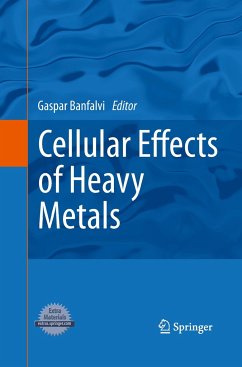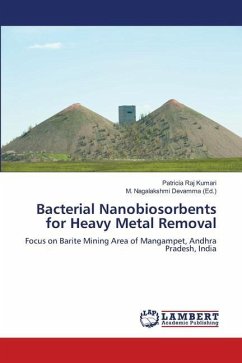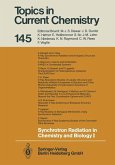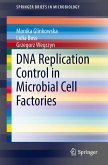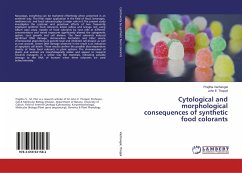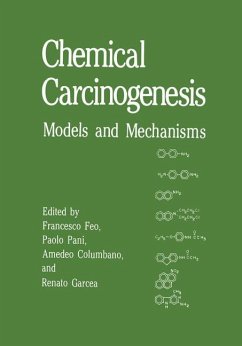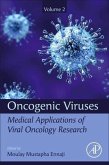The term "heavy metals" is used as a group name of toxic metals and metalloids (semimetals) causing contaminations and ecotoxicity. In strict chemical sense the density of heavy metals is higher than 5 g/cm3. From biological point of view as microelements they can be divided into two major groups. a. For their physiological function organisms and cells require essential microelements such as iron, chromium (III), cobalt, copper, manganese, molidenium, zinc. b. The other group of heavy metals is toxic to the health or environment. Of highest concern are the emissions of As, Cd, Co, Cu, Hg, Mn, Ni, Pb, Sn, Tl. The toxicity of heavy metals is well known at organizational level, while less attention has been paid to their cellular effects. This book describes the toxicity of heavy metals on microorganisms, yeast, plant and animal cells. Other chapters of the book deal with their genotoxic, mutagenic and carcinogenic effects. The toxicity of several metals touch upon the aspects of environmental hazard, ecosystems and human health. Among the cellular responses of heavy metals irregularities in cellular mechanisms such as gene expression, protein folding, stress signaling pathways are among the most important ones. The final chapters deal with biosensors and removal of heavy metals. As everybody is eating, drinking and exposed to heavy metals on a daily basis, the spirit of the book will attract a wide audience.
28th of August, 2010
Referee's opinion
Cellular effects of heavy metals
edited by Gáspár Bánfalvi
The aim of this book is challenging: an extended review in different biological models about the physiologic role of heavy metals in one hand, and detailed summary of pathological consequences of heavy metal exposure in the other hand. The question is discussed in different evolutionary stages from the microbes and plants to the highly evolved mammalians. Theoretical and practical aspects of both fields are more extended then a regular size of a handbook. I would like to lie down my opinion: the editor very successfully solved this contradiction. The structure of the handbook is well balanced. Most important fields are selected in the extended and divergent literature. Authors of the 18 chapters are carefully numbered.
The biological importance of heavy metals in physiologic functions and in pathologic alterations is equally interesting for specialist working in environmental biology, for medical doctors working in public health, for researches in cellular biology fundamental science, for students studying biology, or biologists with simple interest in current results of this field.
The scientific content of the all 18 chapters is high quality. The cited literature is appropriate but some discrepancies are among the chapters in number of the cited articles (e.g. see Chapter No.4 and No, 9). Figures and tables and their legends are mostly informative. More demonstration materials - if the size of this book takes possible - would be remarkable help for readers. However, the divergent field of the chapters increases the importance of a general summary of the book. The "Introduction" is appropriate, but not achieves a framework of the divergent chapters and not enough strongly summarizes a guideline of the whole book.
I suggest a careful remodelling the "Introduction" according to the general message of the book. Some other small details are personally discussed by the editor.
I straight suggest publishing this book after the suggested revision.
Peter Nemeth MD., PhD.
Professor of immunology and biotechnology
University of Pécs, Hungary
Referee's opinion
Cellular effects of heavy metals
edited by Gáspár Bánfalvi
The aim of this book is challenging: an extended review in different biological models about the physiologic role of heavy metals in one hand, and detailed summary of pathological consequences of heavy metal exposure in the other hand. The question is discussed in different evolutionary stages from the microbes and plants to the highly evolved mammalians. Theoretical and practical aspects of both fields are more extended then a regular size of a handbook. I would like to lie down my opinion: the editor very successfully solved this contradiction. The structure of the handbook is well balanced. Most important fields are selected in the extended and divergent literature. Authors of the 18 chapters are carefully numbered.
The biological importance of heavy metals in physiologic functions and in pathologic alterations is equally interesting for specialist working in environmental biology, for medical doctors working in public health, for researches in cellular biology fundamental science, for students studying biology, or biologists with simple interest in current results of this field.
The scientific content of the all 18 chapters is high quality. The cited literature is appropriate but some discrepancies are among the chapters in number of the cited articles (e.g. see Chapter No.4 and No, 9). Figures and tables and their legends are mostly informative. More demonstration materials - if the size of this book takes possible - would be remarkable help for readers. However, the divergent field of the chapters increases the importance of a general summary of the book. The "Introduction" is appropriate, but not achieves a framework of the divergent chapters and not enough strongly summarizes a guideline of the whole book.
I suggest a careful remodelling the "Introduction" according to the general message of the book. Some other small details are personally discussed by the editor.
I straight suggest publishing this book after the suggested revision.
Peter Nemeth MD., PhD.
Professor of immunology and biotechnology
University of Pécs, Hungary

